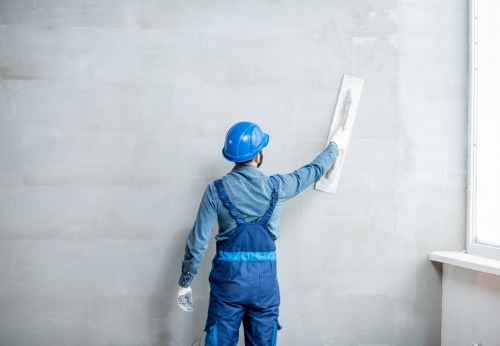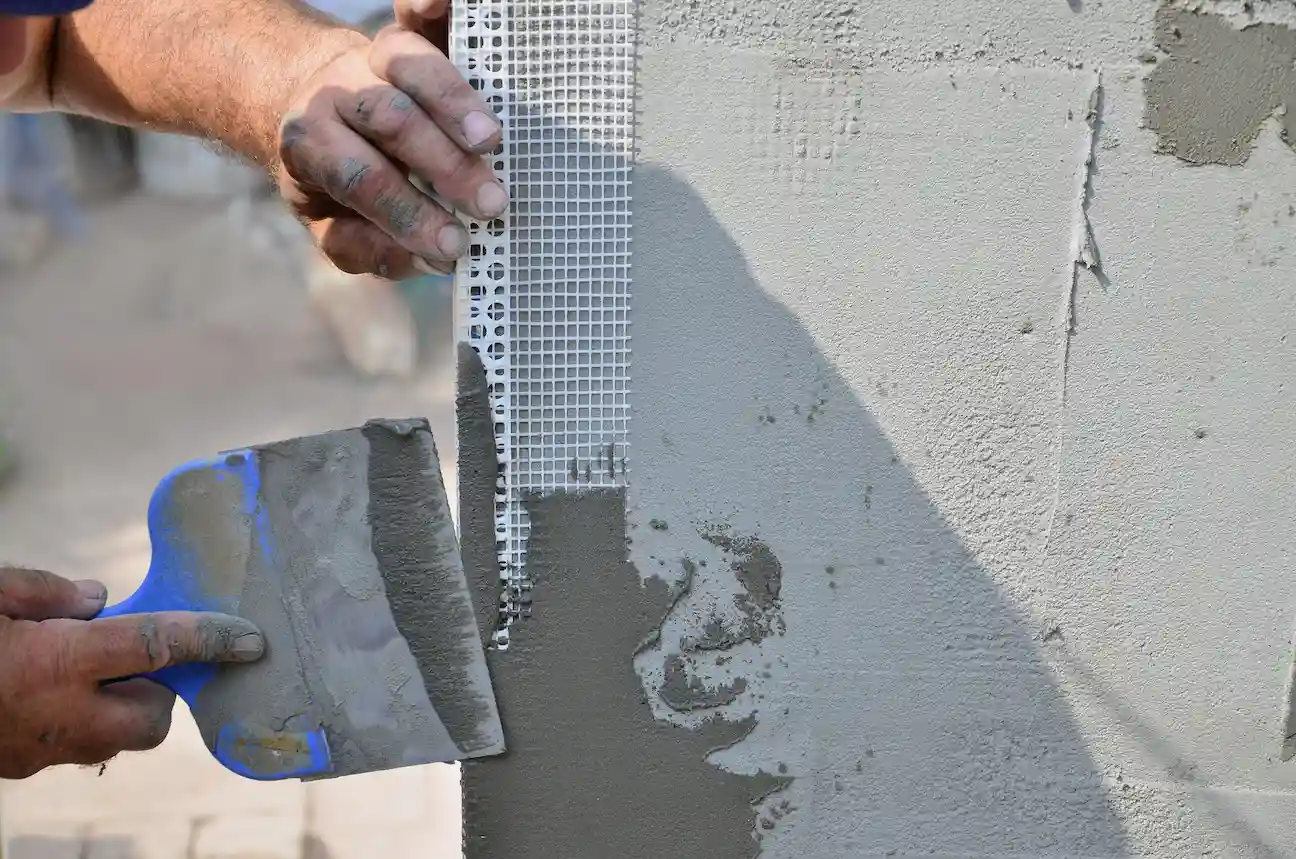Exactly How a Qualified Stucco Contractor Can Improve Your Home's Curb Appeal
Wiki Article
The Benefits of Choosing Stucco for Outside Finishes
Selecting stucco for outside coatings presents a compelling situation for house owners seeking a combination of longevity, aesthetic flexibility, and energy effectiveness. Understood for its capacity to sustain numerous weather conditions, stucco not only decreases long-lasting upkeep prices but also enhances the visual appeal of any building with its variety of shades and structures.
Durability and Long Life
Stucco, a mix of concrete, lime, and sand, offers phenomenal toughness and longevity for exterior coatings. This material is specifically resistant to harsh weather condition conditions, including heavy rain, strong winds, and severe temperature levels. Its make-up enables it to hold up against wetness infiltration, thus decreasing the risk of mold and mildew and mold, which can compromise the stability of various other exterior products.Stucco is known for its low upkeep needs, as it does not require frequent repainting or sealing, unlike timber or plastic exterior siding. When appropriately installed, stucco can last for a number of years, making it an affordable option over time. Additionally, stucco's resistance to breaking and fading makes sure that the visual allure of the exterior remains undamaged over time.
One more considerable benefit of stucco is its fire resistance, a crucial consideration for lots of house owners. Unlike timber, stucco does not melt easily, providing an added layer of safety (stucco contractor). In general, the toughness and long life of stucco make it an excellent alternative for those looking for a trusted and long-lasting outside coating that can endure the test of time and environmental challenges
Aesthetic Versatility


In addition, stucco can be easily tinted making use of essential pigments, giving a comprehensive combination to select from. This versatility in shade enables for customization, enabling structures to harmonize with their environments or attract attention as distinct sites. Furthermore, stucco can be incorporated with various other products, such as rock or timber, to develop aesthetically striking contrasts that boost the general façade.
The material's capability to be formed into different shapes even more adds to its visual charm. Custom-made attributes like arcs, trim, and decorative elements can be perfectly integrated into stucco designs, enriching the visual intricacy of a structure. On the whole, the visual convenience of stucco not just boosts the curb appeal of a residential property yet additionally mirrors the personal style and preferences of the property owner, making it an outstanding choice for outside coatings.
Power Efficiency
Energy-efficient building materials are essential for reducing power intake and reducing utility costs, and stucco stands apart in this regard. Its distinct composition and application add to enhanced thermal performance, enabling buildings to keep steady indoor temperature levels throughout the year.Stucco has a high thermal mass, indicating it can absorb and save heat during the day and launch it gradually at night. This residential or commercial property helps reduce severe temperature variations, reducing the dependence on home heating and cooling systems, hence fostering power performance. Additionally, stucco can be used over insulating products, better improving its energy-saving possibility.
On top of that, the smooth nature of stucco decreases air infiltration, which can bring about unwanted heat loss or gain - stucco contractor. This airtight obstacle not only boosts convenience levels however additionally lowers the workload on a/c systems, ultimately lowering energy costs
Moreover, stucco's reflective top qualities can reduce heat absorption, especially in warmer climates, which assists in keeping cooler interior environments and lessens reliance on a/c. By selecting stucco for outside surfaces, home builders and home owners visit the site can make significant strides in the direction of energy effectiveness, fostering both environmental sustainability and economic financial savings.
Reduced Upkeep Demands
What makes stucco an enticing option for homeowners looking for a low-maintenance exterior finish? The durability and strength of stucco are crucial factors that add to its low upkeep requirements.Stucco is non-combustible and does not bring in pests, substantially decreasing the chance of damage from termites or fire. Its outside surface is additionally resistant to mold and mold, especially when used with a top notch finish. House owners can anticipate to do just occasional cleansing with water and light detergent to preserve its look.
Additionally, stucco is much less prone to breaking than various other materials, particularly when mounted properly with appropriate growth joints. Need to any repair services be required, they are affordable and usually straightforward, negating the need for substantial renovations. In general, the mix of sturdiness, resistance to parasites and dampness, and minimal upkeep makes stucco an exceptional option for those focusing on a low-maintenance outside coating.
Eco-Friendly Characteristics
Selecting stucco not just straightens with home owners' needs for reduced upkeep yet additionally offers significant environment-friendly residential or commercial properties. Made mainly from natural materials such as sand, lime, and cement, stucco provides a lasting choice for exterior browse around this web-site surfaces. Its production process consumes less energy contrasted to artificial products, adding to a reduced carbon footprint.Additionally, stucco is extremely sturdy, which equates to a much longer lifespan and lowered need for constant replacements. Stucco's thermal mass buildings enhance energy performance by regulating interior temperature levels, which can lead to decreased home heating and air conditioning costs.
Additionally, stucco can be used with low-VOC (volatile natural substances) paints and surfaces, reducing dangerous exhausts related to interior air top quality. Its flexibility permits an array of textures and finishes, ensuring aesthetic charm without endangering eco-friendly integrity - stucco contractor. By choosing stucco, house owners not just boost their building's beauty but also contribute favorably to ecological sustainability
Verdict
In recap, stucco offers an engaging selection for exterior surfaces because of its durability and longevity, aesthetic versatility, energy efficiency, low upkeep needs, and environmentally friendly homes. These attributes not just improve the visual appeal of homes yet additionally add to set you back savings and environmental sustainability. As homeowners look for appealing and durable building products, stucco stands out as an optimum remedy, lining up with contemporary demands for both capability and eco-friendly obligation in domestic design.look at this web-site Picking stucco for outside surfaces presents an engaging situation for home owners seeking a combination of longevity, visual versatility, and energy performance. Generally, the aesthetic convenience of stucco not just improves the curb allure of a building however also mirrors the individual design and preferences of the home owner, making it an exceptional choice for outside finishes.
What makes stucco an enticing option for home owners seeking a low-maintenance outside surface? Made primarily from all-natural materials such as lime, cement, and sand, stucco provides a lasting choice for outside finishes.In recap, stucco presents a compelling selection for exterior surfaces due to its resilience and long life, aesthetic convenience, energy performance, low upkeep requirements, and eco-friendly buildings.
Report this wiki page